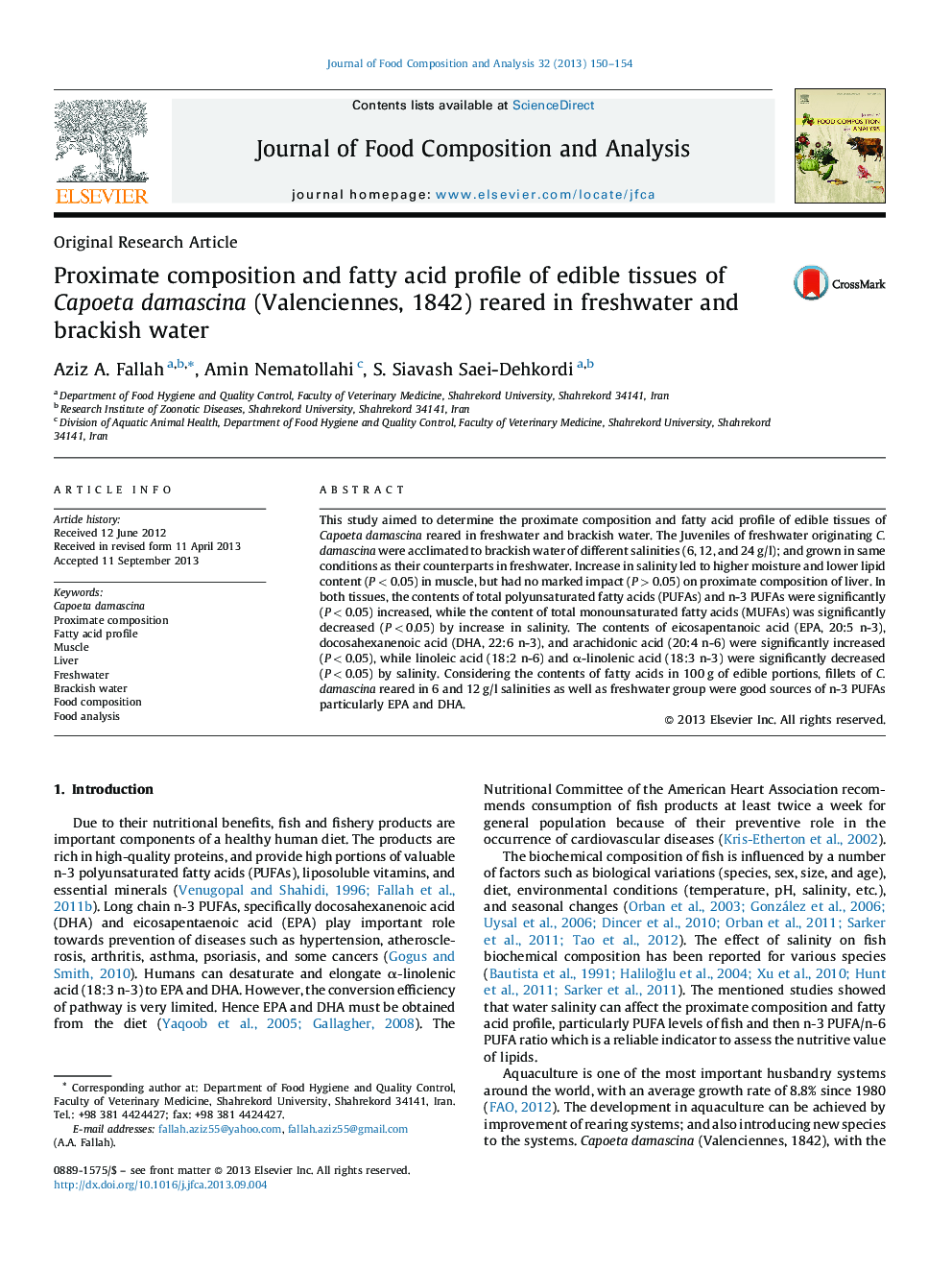| کد مقاله | کد نشریه | سال انتشار | مقاله انگلیسی | نسخه تمام متن |
|---|---|---|---|---|
| 1218461 | 967606 | 2013 | 5 صفحه PDF | دانلود رایگان |

• Chemical composition of C. damascina in fresh- and brackish water was determined.
• The moisture and total lipid contents of muscle were affected by salinity.
• Salinity led to higher PUFAs and lower MUFAs in edible tissues of the fish.
• Brackish water C. damascina is a desirable source of n-3 PUFAs.
This study aimed to determine the proximate composition and fatty acid profile of edible tissues of Capoeta damascina reared in freshwater and brackish water. The Juveniles of freshwater originating C. damascina were acclimated to brackish water of different salinities (6, 12, and 24 g/l); and grown in same conditions as their counterparts in freshwater. Increase in salinity led to higher moisture and lower lipid content (P < 0.05) in muscle, but had no marked impact (P > 0.05) on proximate composition of liver. In both tissues, the contents of total polyunsaturated fatty acids (PUFAs) and n-3 PUFAs were significantly (P < 0.05) increased, while the content of total monounsaturated fatty acids (MUFAs) was significantly decreased (P < 0.05) by increase in salinity. The contents of eicosapentanoic acid (EPA, 20:5 n-3), docosahexanenoic acid (DHA, 22:6 n-3), and arachidonic acid (20:4 n-6) were significantly increased (P < 0.05), while linoleic acid (18:2 n-6) and α-linolenic acid (18:3 n-3) were significantly decreased (P < 0.05) by salinity. Considering the contents of fatty acids in 100 g of edible portions, fillets of C. damascina reared in 6 and 12 g/l salinities as well as freshwater group were good sources of n-3 PUFAs particularly EPA and DHA.
Journal: Journal of Food Composition and Analysis - Volume 32, Issue 2, December 2013, Pages 150–154